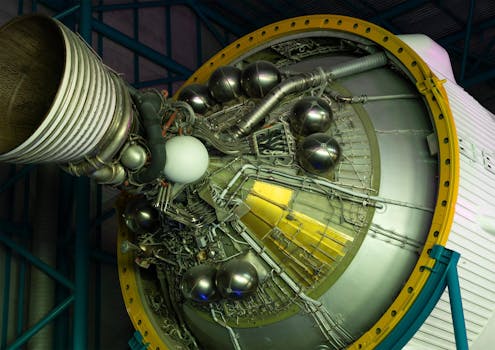Orbiting Innovations: Key Updates in Satellite Telecommunications Technology

Orbiting Innovations: Key Updates in Satellite Telecommunications Technology
Orbiting Innovations: Key Updates in Satellite Telecommunications Technology
The field of satellite telecommunications is witnessing a significant transformation with the advent of cutting-edge technologies. Satellite telecommunications technology has become an essential component of modern communication systems, providing global coverage, reliability, and security. In this article, we will delve into the latest developments in satellite telecommunications technology, exploring the key updates and innovations that are shaping the industry.
The demand for satellite telecommunications services is increasing rapidly, driven by the growing need for global connectivity, remote communication, and data transfer. To meet this demand, satellite manufacturers and operators are investing heavily in research and development, leading to the creation of more advanced and efficient satellite systems. One of the significant advancements in satellite telecommunications technology is the development of high-throughput satellites (HTS). HTS satellites are designed to provide faster data transfer rates, higher capacity, and greater connectivity, making them ideal for applications such as broadband internet, mobile networks, and remote sensing.
Another key innovation in satellite telecommunications technology is the use of advanced propulsion systems. Traditional satellite propulsion systems rely on chemical propulsion, which can be heavy, expensive, and inefficient. In contrast, advanced propulsion systems, such as electric propulsion and ion engines, offer greater efficiency, longer mission durations, and reduced costs. These propulsion systems are enabling satellites to stay in orbit for longer periods, reducing the need for frequent replacements and minimizing the risk of satellite collisions.
Next-Generation Satellite Designs
The design of satellites is also undergoing a significant transformation, with a focus on creating more efficient, compact, and flexible systems. Next-generation satellite designs are incorporating advanced materials, such as composites and 3D-printed components, to reduce weight, increase strength, and enhance thermal management. These designs are also featuring modular architectures, allowing for easier integration of payloads, simpler maintenance, and reduced costs.
Furthermore, the development of small satellites, also known as smallsats, is revolutionizing the satellite telecommunications industry. Smallsats are smaller, lighter, and less expensive than traditional satellites, making them ideal for applications such as Earth observation, communication, and scientific research. Smallsats are also enabling the creation of satellite constellations, which can provide global coverage, improved connectivity, and enhanced services.
Advanced Antenna Systems and Propagation
The development of advanced antenna systems is another crucial aspect of satellite telecommunications technology. Phased array antennas, for example, are capable of electronically steering and shaping beams, enabling satellites to communicate with multiple targets simultaneously. These antennas are also more compact, lighter, and more efficient than traditional antennas, making them ideal for use in small satellites and satellite constellations.
In addition, the study of wave propagation is essential for understanding how signals interact with the atmosphere and ionosphere. Advanced propagation models are being developed to predict and mitigate the effects of signal fading, interference, and distortion, ensuring more reliable and efficient communication systems.
Security and Cybersecurity in Satellite Telecommunications
As satellite telecommunications systems become increasingly critical to global communication and commerce, the need for robust security and cybersecurity measures is becoming more pressing. Satellite operators and manufacturers are implementing advanced encryption techniques, secure communication protocols, and intrusion detection systems to protect against cyber threats and unauthorized access.
Moreover, the development of quantum-resistant cryptography is essential for ensuring the long-term security of satellite telecommunications systems. Quantum computers have the potential to break certain types of encryption, compromising the security of satellite communications. Quantum-resistant cryptography, such as lattice-based and code-based cryptography, is being developed to provide long-term security and protect against quantum computer attacks.





